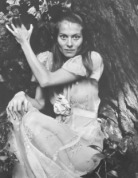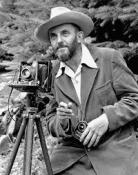Nude photographs for the feminist movement
Created by Josselyn Nau on Mon, 04/01/2024 - 20:24
This timeline provides a sociohistorical context for Judy Dater's 1974 Twinka at Yosemite


Timeline
Chronological table
| Date | Event | Created by | Associated Places | |
|---|---|---|---|---|
| The start of the month Oct 1890 |
Founding of Yosemite national parkYosemite national park was founded in California in 1890. The opening of Yosemite National Park marks a significant milestone in the conservation and appreciation of natural beauty in the United States. Yosemite became the third national park in the country. It showcased the beautiful landscapes of the Sierra Nevada Mountains in California. The park inspired generations of nature enthusiasts, artists, and conservationists. Yosemite's founding marked the beginning of a cultural and artistic movement. The park's wide variety of scenery captured the imagination of painters, photographers, writers, and adventurers. Many artists flocked there for inspiration for their work. Artists like Ansel Adams captured Yosemite's landscapes through photography and writers like John Muir advocated for its protection. Judy Dater took a collection of photos at Yosemite to show off her work. She had an artistic journey at Yosemite National Park, representing a unique mix of photography, feminism, and the natural world. Dater's presence at Yosemite helped pave the way for greater recognition of women in the male-dominated field of photography. She helped women challenge the old ways and create new voices for themselves. Yosemite was crucial for Judy Dater to show her creativity and voice. She proved herself to be a great photographer with the pictures she took at Yosemite national park. |
Josselyn Nau | ||
| The middle of the month Nov 1932 to 1935 |
Group f/64
|
Josselyn Nau | ||
| 1970 to 1980 |
feminist artist movement of 1970The feminist artist movement from 1960 through the 70s was the second wave of feminism that focused on equality and discrimination. Feminist artists used many ways of art like paintings, photographs, crafts, and performance art to show womens work. They used these in hopes to end sexism and oppression. Many organizations and efforts were created to help the movement. For example, some include Washington Women's Arts Center, Los Angeles Council of Women Artists, and the Women's Artist in Revolution (WAR). These were founded/protested to help the representation of women artists around the world. They quickly spread through museum protests and the early network, West-East bag. Later, in a nationally circulated newsletter and conference, more first generation women artists started to become more recognized. Some of these women include Judy Chicago, Miriam Schapiro and Suzanne Lacy. Because of this movement women started catching up to men in the established art world and started gaining equal rights. They were still far from equality but they were making big steps to get closer. Because of this movement, Judy Dater had the way paved for her to become the successful artist she is now. Her photographs also capture a lot of feminist work and ideas. |
Josselyn Nau | ||
| 2000 |
explanationThe reason that I offered that background concerning those three events is because it helps me to explain what Imogen and Twinka at Yosemite were doing socially/culturally and/or politically when Judy Dater created it. The group f/46 helped Dater find her way of expressing her work. She learned how to capture what she wants the world to see through her eyes. She used straight photography to capture the picture of Twinka. The clarity of the portrait helps us see her point of view. Secondly, the feminist movement of the 70s was crucial for Judy Dater to show her work. Without the movement, who knows if her work would even be that famous to this day. Dater was a victim of the sexism at the time. The movement helped artists like her express their work willingly. Her image was already getting hate at the time for being a nude portrait, so the movement normalizing her type of work helped a lot. And finally, the Yosemite national park is where Twinka at Yosemite was taken. The park was special to Dater for her collection of photos she was taking. The vast backgrounds of the park give details about her photos that any other background couldn’t. In her photo, the woman is supposed to picture a nymph. The park was a perfect place to photograph a nymph because they need to be in the wild. Yosemite is such a beautiful place it is almost mystical in a way. It turned out to be the perfect place given the background of this photo.
“Judy Dater.” Catalyst: Interviews, 15 Nov. 2023, www.catalystinterviews.com/interviews/2023/11/15/judy-dater. Accessed 18 Mar. 2024.
“Judy Dater.” Wikipedia, 22 Dec. 2023, en.wikipedia.org/wiki/Judy_Dater. Accessed 18 Mar. 2024. “Yosemite National Park.” Wikipedia, 29 Mar. 2024, en.wikipedia.org/wiki/Yosemite_National_Park#:~:text=Muir%20and%20Johnson%20lobbied%20Congress. Accessed 2 Apr. 2024. Wikipedia Contributors. “Group F/64.” Wikipedia, Wikimedia Foundation, 19 Nov. 2019, en.wikipedia.org/wiki/Group_f/64. “Feminist Art Movement in the United States.” Wikipedia, 31 Dec. 2019, en.wikipedia.org/wiki/Feminist_art_movement_in_the_United_States. “Judy Dater and the Photographic Portrait.” Norton Simon Museum, www.nortonsimon.org/learn/adults/impressions/judy-dater-and-the-photogra.... Accessed 2 Apr. 2024. |
Josselyn Nau |



